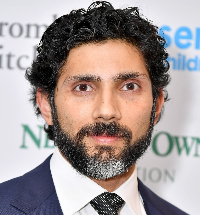
Dr. Sunil Suhas Solomon, a member of the HPTN Substance Use Scientific Committee and HPTN 103 protocol team, is a professor of medicine and epidemiology at the Johns Hopkins University School of Medicine in Baltimore, Md. His research primarily focuses on preventing and treating HIV, viral hepatitis, and other infectious diseases among vulnerable populations such as people who inject drugs.
What attracted you to a career in HIV prevention research?
When I completed my medical training, I wanted to be a surgeon. But my father, a cardiothoracic surgeon, told me that surgery is too downstream. To impact people’s lives, we should address health more upstream and prevent people from needing surgery. This was particularly relevant among the populations in India, where the majority could not afford surgery. So, I turned my focus to public health. HIV was one of India’s most significant public health threats at the time, and my mother was leading an HIV program in India, so I joined her. And I have never looked back. I have learned so much from the communities I work with about strength, courage, and resilience that it inspires me.
What aspect of your role do you enjoy the most?
My favorite part of the work is when I go to the clinics and work with the communities. We established one of the first community-led clinics for transpeople in India, the Mitr clinics, in collaboration with PEPFAR/USAID, the National AIDS Control Organisation, India, and the State AIDS Control Societies. Every time I visit these clinics, or our clinics for people who inject drugs or men who have sex with men, the energy I experience in these spaces is indescribable and one of the things I enjoy the most about my work.
What would you say most motivates you to do what you do?
The people! Every time I visit one of our sites, I am reminded that despite all we have done, there is still much more to do. And our work is not done until everyone everywhere has access to health care, including HIV prevention tools.
What has been the biggest challenge working in HIV prevention research?
My biggest challenge is addressing the sociostructural determinants that constitute the risk we are trying to address with pre-exposure prophylaxis, antiretroviral therapy, or microbicides. To address HIV prevention, we must move beyond these tools and start incorporating interventions to address homelessness, unemployment, depression, stigma, etc. It is critical to address these constructs in HIV prevention research. Implementing studies that incorporate sociostructural determinants is complicated and expensive, but something I believe we should be moving towards.
What has been one of your proudest moments as a member of the HPTN?
I think one of my proudest moments is yet to come. 😊
What advice do you have for new HPTN members?
Ralph Waldo Emerson best said what I learned from my parents: “Do not go where the path may lead; go instead where there is no path and leave a trail.” And as we say in India, “you got to believe in reincarnation” because sometimes getting a protocol off the ground may feel like more than a lifetime.
What has been the most unusual or interesting job you’ve ever had?
I worked to develop video content for a safe sex website. I had to convey scientific messages in an approachable way targeted at the LGBTQ community in India. My first experience with lights, cameras, make-up, directors, producers, etc., was much more complicated than my “regular” job. It was both unusual and exciting because we seldom think of how the target audience would like to hear a message.